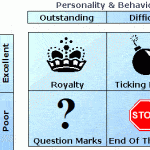The modern Olympic pentathlon, which features fencing, swimming, horseback riding, pistol shooting, and running, got its start as a trial of military readiness. They were the original extreme athletes. Interestingly, it turns out that feeling of being able to tackle anything is a pretty powerful motivator.
Ever since the dawn of mankind, there have been amateur extreme athletes — ordinary people who push themselves, testing the limits of their physical strength, endurance, and determination.
There are Tough Mudders. There are Strongman.org competitions that include tractor tire flips, atlas stone lifting, car flips, and more. In Scotland, there’s the caber toss, which is basically guys throwing telephone poles. There’s The Bataan Memorial Death March — 26.2 miles of hills and loose sand in the New Mexico desert, encumbered by a weight vest. And there are double, triple, quadruple, quintuple, deca-, double-deca, and triple-deca Ironman ultratriathlons.
For that last one, you swim 71 miles (the distance from Mobile, AL to Pensacola, FL by sea), then ride your bike across the United States, then run a distance equivalent to Atlanta, GA to Houston, TX.
There’s an old joke about how you can tell when you’ve met an Ironman finisher. The answer is, you don’t; they’ll tell you. The point of the joke is that if you ask what drives the many, many amateurs who train like professionals and seriously compete in limit-pushing events, you’ll find that fitness isn’t just about building muscle or dropping weight or eating right. It’s about seeing what you’re capable of; about just being able to say you DID it.
So what can your fitness business learn from these bitten-by-a-radioactive-spider superhero types?
1. There is no limit to the depth of human aspiration
As long as the goal is desirable, achievable, and it looks like there’s plan to get there (that’s where you come in), people are willing to step up to the line.
2. People will spend serious money on fitness and wellness goals
Some events, such as the 4K for Cancer (a run across the US), require registrants to be able to afford staying in a hotel every 40 miles or so, roughly $5000-$7000. And that’s BEFORE they raise any money to fight cancer. Some amateurs spend upwards of $5,000 on a bicycle to compete in Ironmans.
So if customers are balking at prices, it’s not that customers aren’t willing to fork over their money. They just have to value what you’re doing for them and view your business as an enabler to achieving their goals.
3. …but not everyone will spend $5000 on a bicycle
If your fitness business’s goals are a little less ambitious than training the next winner at Kona, consider how the concept scales down to your everyday customer, of which there is a far greater supply. Can you identify fitness objectives and a price point that feel reasonable to your customer, yet recognize the value and uniqueness of what your offer? If so, you may be able to offer premium services and won’t have to the low price leader.
4. There should always be another goal in sight
Every marathoner began with a run shorter than a marathon. With training, they improved, learned things, and applied those lessons to longer distances and faster times.
Whether it’s you or your customer who sets the goal, pick something that’s personally significant and meaningful, doable, and has its share of bragging rights.
5. Your business should be the way to that goal
Your business should be able to help your customer plan, train, and achieve her fitness goals. If not:
- You’re not equipped with the right hardware, OR
- You’re not equipped with the right knowledge, OR
- You’re not in the right location, OR
- You’re not in the right frame of mind.
If this is the case, either buy the hardware or refer your customer to someone who has it; learn how to help them or find someone who can; point them to the right location; or double your focus on what their actual goals are.
Anything else and you’re standing in their way.
6. Listen, modify, repeat
When you pay attention to your customer’s fitness goals (and don’t just “cookbook it”), develop and personalize a plan for them to achieve those goals, and marshal the resources necessary to help them push their own limits, you’re helping launch them on a grand adventure of “I can do it!” that doesn’t feel AT ALL like a day of drudgery on “the dreadmill.” The more you keep at it, the likelier it is that they’ll feel you’re opening up a world of possibilities in their life.
They’ll also likely view your contribution as a critical factor in their success and give your business credit for their own personal achievements.
Not bad for a day at the office.


